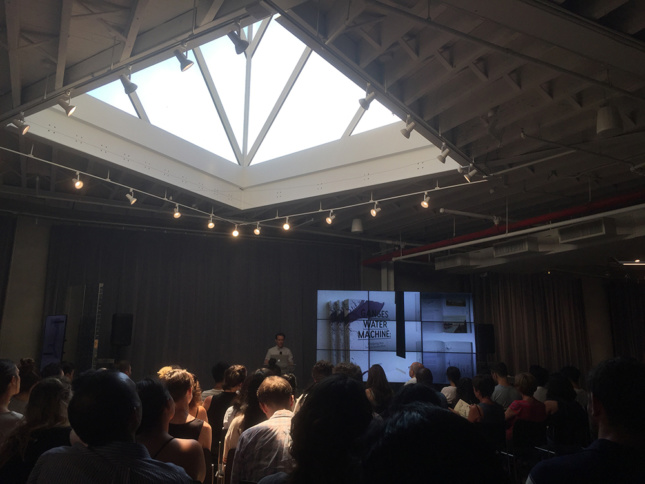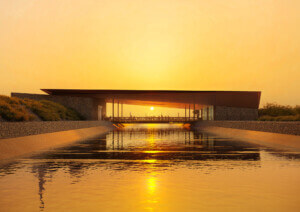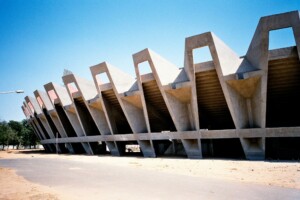Anthony Acciavatti, Columbia GSAPP Professor and award-winning author, delivered a lecture at Greenpoint creative space A/D/O earlier this week on his 2015 book titled Ganges Water Machine: Designing New India’s Ancient River. The event is part of the company’s #Waterfutures Research Program that challenges designers and researchers to rethink the global drinking water crisis.
Acciavatti reflected on his decade-long fieldwork where he traveled by foot, boat, and car to document the Ganges River basin from its source in the Himalayas to the historic city of Patna nearly 1,000 kilometers downstream. During the lecture, Acciavatti explained the difficulties of obtaining satellite imagery at a time when web-mapping services such as Google Maps were not yet invented. Instead, he resorted to designing and building his own instruments to map and visualize the region’s data.
As a founding partner at Somatic Collaborative, Acciavatti is now actively working with his partner Felipe Correa, who was recently named Chair of Architecture at the University of Virginia School of Architecture, as well as Indian authorities to realize his research and designs for the region.

The Ganges is a trans-boundary river, which crosses India, Bangladesh, and other South Asian countries. According to various reports, the Ganges is highly polluted by human activity, but it still is the source of drinking water for over 400 million people.
Acciavatti’s book doesn’t focus on the region’s pollution, but instead investigates the 19th century British engineering that made the network of irrigation canals and aqueducts possible. He was also interested in identifying the political implications of how water became a powerful political resource throughout the river’s historical evolution and what it means today.











